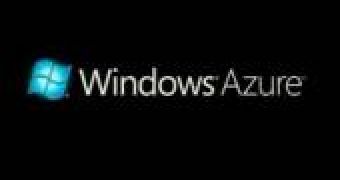Windows Azure is by no means isolated in an ivory tour and accessible exclusively through Microsoft technologies. Generally available as of February 1st, 2010, Windows Azure comes with the promise that interoperability is a priority, a move designed as an invitation for developers, but also partners, customers and governments to embrace Microsoft’s Cloud.
The Redmond company even offered tangible proof of Windows Azure’s capacity to play nice with third-party technologies, namely Eye on Earth, a project developed in collaboration with the European Environment Agency designed to centralize data on water and air quality from over 23,000 monitoring points and stations across Europe. Eye on Earth was made possible through the intersection of technologies such as Windows Azure, SQL Azure and Linux solutions.
General Managers Craig Shank and Jean Paoli are helming Microsoft’s interoperability efforts with backgrounds in global standards and public policy and adapting company products to customer needs. “There’s a tremendous level of creative energy around cloud services right now — and the industry is exploring new ideas and scenarios together all the time. Our goal is to preserve that flexibility through an open approach to cloud interoperability,” Shank said.
“This means continuing to create software that’s more open from the ground up, building products that support the existing standards, helping customers use Microsoft cloud services together with open source technologies such as PHP and Java, and ensuring that our existing products work with the cloud,” Paoli added.
It’s a new world, and not just for Microsoft. Private and Public Clouds; applications and services running in third-party datacenters or on-premise, or both; and mixed environments featuring proprietary and open source solutions side by side has made interoperability a critical aspect to consider when adopting new technologies, for customers, developers and partners.
It is the case of Windows Azure, for which the company introduced support covering a range of standards and protocols, such as PHP, Java, Ruby or the .NET Framework. Developers can leverage either one to deliver new offerings based on Windows Azure. “The technical work of interoperability is challenging, and it requires a commitment to our customers’ needs as well as a concerted effort on multiple fronts and a measured, pragmatic approach in how technology is developed,” Paoli explained.
Still, work on interoperability is rather a commitment to the long run rather than a sprint. Microsoft is approaching the problem from a variety of perspectives, since delivering interoperability is a multifaceted issue, and the software giant is collaborating with customers, organizations and partners in such efforts as the Interoperability Executive Customer (IEC) Council, the Open Cloud Standards Incubator, and Simple Cloud.
Even ahead of Windows Azure GA, the Redmond company made sure that developers had multiple “bridges” available connecting Microsoft and non-Microsoft technologies, especially open source solutions, including Windows Azure Software Development Kits (SDKs) for PHP and Java, tools for Eclipse version 1.0, the new Windows Azure platform AppFabric SDKs for Java, PHP and Ruby, the SQL CRUD Application Wizard for PHP, and the Bing 404 Web Page Error Toolkit for PHP.
Windows Azure Software Development Kit (February 2010) version 1.1 is available for download here.
Windows Azure Tools for Microsoft Visual Studio 1.1 (February 2010) is available for download here.

 14 DAY TRIAL //
14 DAY TRIAL // 
